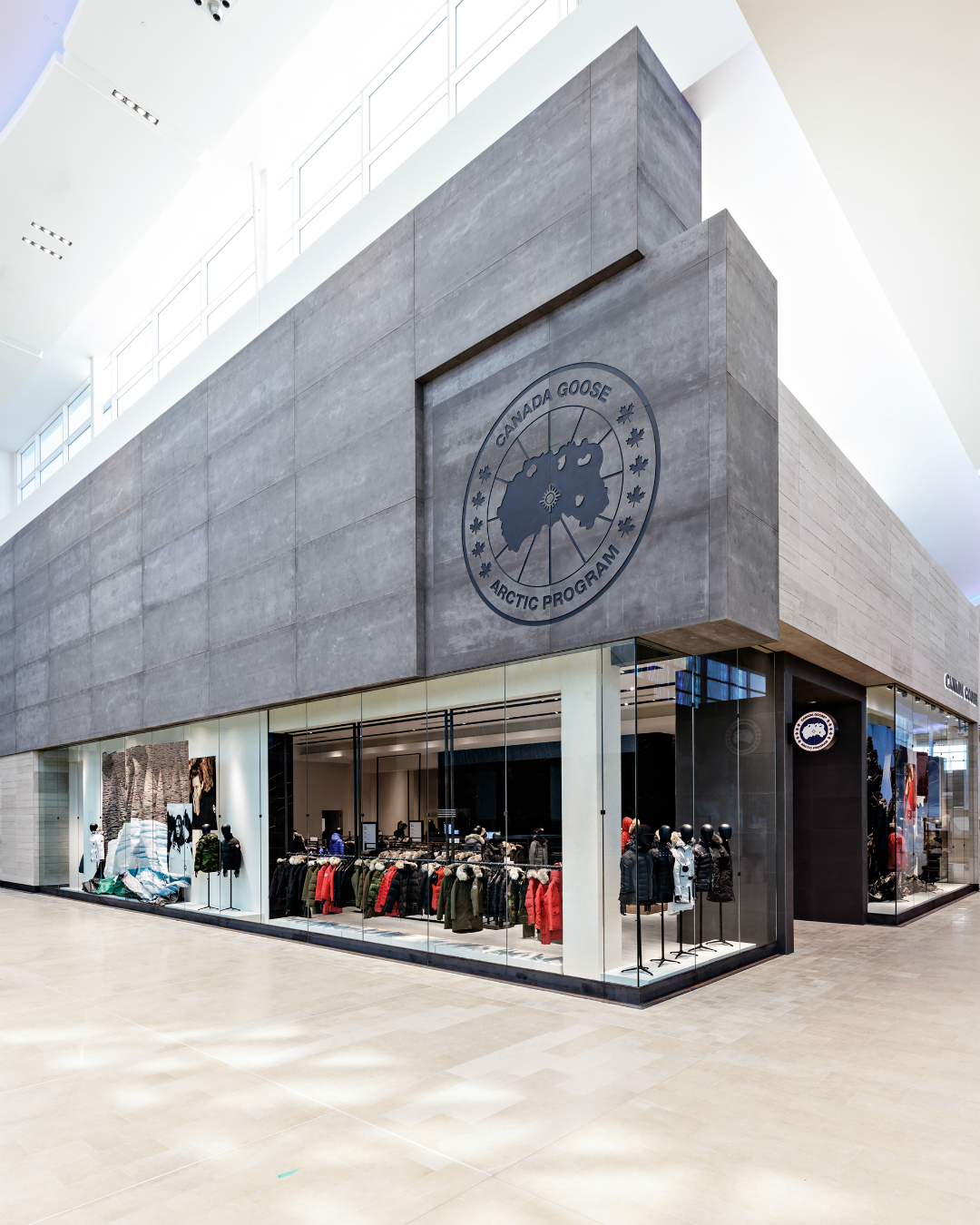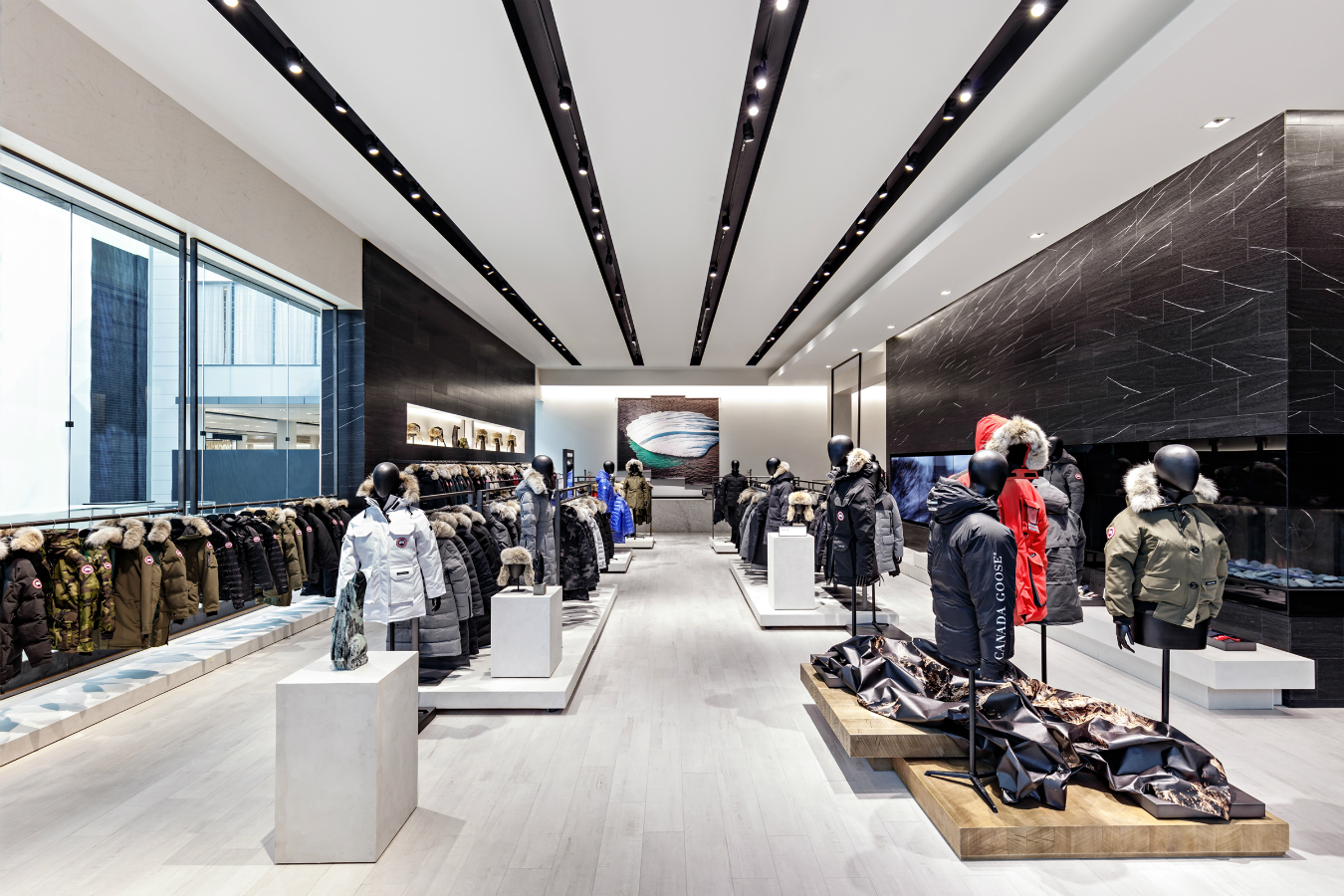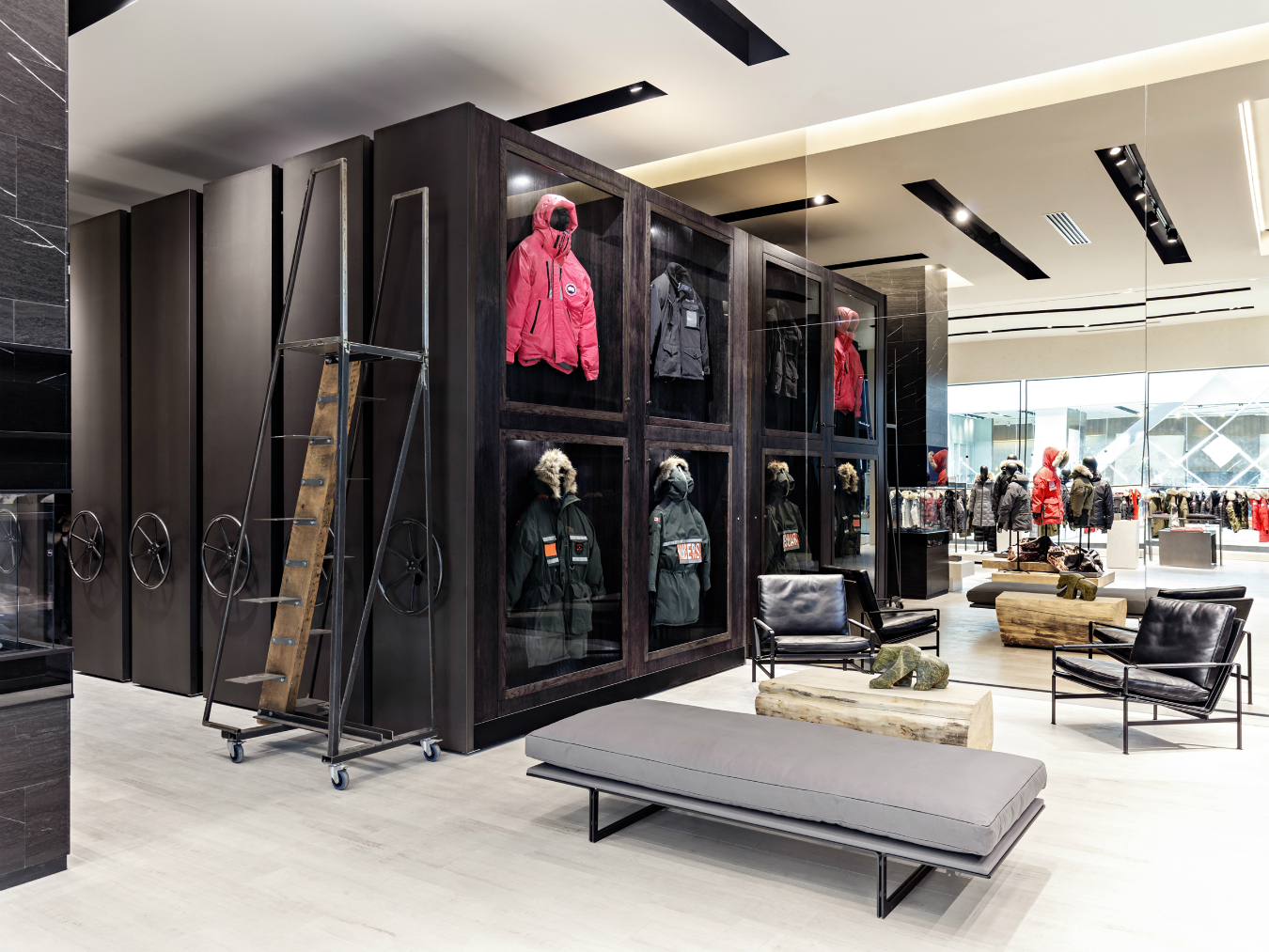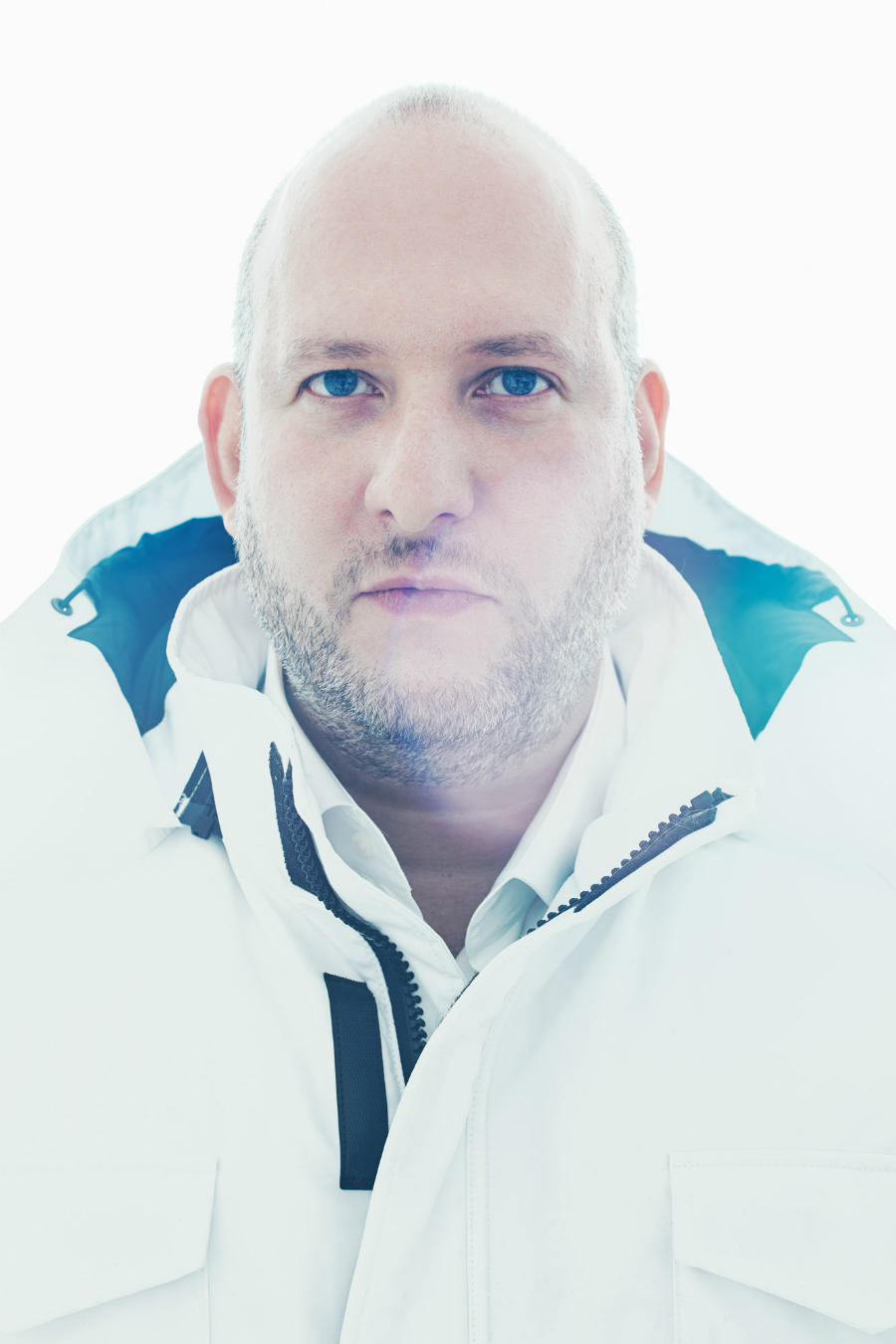Being Canadian has never been cooler. A young, hot Prime Minister; the welcoming of Syrian refugees; Drake. But Winter Olympics and travelling abroad aside, Canadians are generally low-key about their Canadian-ness. That has not been the case with Canada Goose, though. The nearly 60-year-old outerwear brand has worn its patriotism on its sleeve (or chest) since 2000, when it gave up its original name, Snow Goose, for the one it used in Europe upon discovering Canada had serious clout there—particularly, and unsurprisingly, in the realm of down-feather-filled parkas meant for the coldest weather.
Manufacturing nearly all of its products on home turf makes Canada Goose more Canadian than most companies. CEO Dani Reiss loves to draw the Swiss watch comparison, in that it’s not a Swiss watch if it isn’t made in Switzerland, ergo it’s not a Canada Goose jacket if it’s not made in Canada. But just as Reiss cemented that commitment when he stepped into his father’s role in 2001, clothing production in the country was rapidly diminishing. “We had to rebuild an industry,” says Reiss. “We’ve developed training programs to teach people the skills to make our jackets. We’ve created a workforce.” Indeed, today Canada Goose employs 10 per cent of the nation’s cut-and-sew industry.
There were fewer than 40 employees when Reiss started 19 years ago, and now it’s 1,400. That includes 35 new hires for the brand’s first store, and flagship, at Toronto’s Yorkdale Shopping Centre, which opened in October. Until now, Canada Goose was available solely through wholesale partners such as Holt Renfrew and Simons, and, as of 2014, online. With the meteoric rise of ecommerce, and many brick-and-mortars struggling or shuttering, it might seem like a strange time to set up a 4,000-square-foot shop, but for Reiss it’s all a part of the bigger sell. “When people first try on a Canada Goose jacket, they realize it’s so warm, so I think we’ve always been experiential in that sense,” says Reiss. “And having a brick-and-mortar location allows us to tell a story, and really show off the brand and Canada.”
All chapters from the proverbial storybook are present in the store: new styles, archival pieces, exclusives, collaborations. The Canadiana extends beyond the product, too, with a reception desk made of British Columbia marble, soapstone polar bear carvings by Alberta-based aboriginal artist Jason Carter, and furniture from Montreal’s Montauk Sofa.
These same design elements will be carried over into the brand’s second store, opening in New York in November. Ironically, Canada is not Canada Goose’s biggest market—that would be the U.S., with the Big Apple at its core. (Sales there were up 30 per cent last year.) Reiss attributes their growth to two things: “Our relationship with pop culture—Hollywood, athletes, and entertainers—and the fact that our brand is functional, not just fashion.” The latter he puts particular weight on. “At the end of the day, I don’t think any brand is sustainable for the long-term if you don’t make the best-in-class product.”
Striking the right function-plus-fashion notes isn’t strictly an inside job. In 2016 alone, Canada Goose collaborated on styles with Marc Jacobs, Opening Ceremony, Vetements, and Drake’s OVO. Known to sell out in minutes, the ongoing relationship with OVO is a particularly lucrative one.
Most collaborations are reimagined versions of Canada Goose’s iconic down parkas, and while that winter staple remains the pillar of the business, the team has also been putting more time and effort into the warmer seasons. The Spring 2017 collection is only the third of its kind, and Reiss considers it their best yet. There are five new fabrics, including the paper-thin, transparent Solo-Light for high winds and light rains, as well as four new abstract prints, one based off of WWI dazzle camouflage used on British and American naval ships. Down still shows up, albeit ultra-light, and most innovatively interpreted as a crewneck sweater.
What’s missing from the Spring line is coyote fur, a material used on the trim of the brand’s hooded parkas that has drawn a lot of heat from animal rights groups in the process. The criticisms mainly pertain to Canada Goose’s claims on its website that the fur purchased from trappers is humanely captured, and only coyote, an abundant species. Last year, Animal Justice Canada went so far as to file a false advertising complaint against the company, but the Competition Bureau of Canada dismissed the case. “Our sourcing meets the strictest standards of ethical hunting and trapping that exists,” says Reiss. “We stand behind what we do.” He does, however, understand that there are people who uniformly disagree with the use of fur: “Fortunately, lots of styles don’t have fur; at least half of our collection doesn’t.”
The fur flack doesn’t seem to have quelled Canada Goose’s growth, and to keep up with demand, the company purchased an existing 45,000-square-foot factory in Toronto and opened a new 103,000-square-foot facility in Winnipeg last year. Reiss acknowledges that expanding their product line may necessitate some out-of-country manufacturing, but that they endeavor to keep all down jacket production here. “The world loves Canada, the world wants more Canada, and we have a big opportunity to keep doing that,” he says. “Bigger in the right way.”
While Reiss dreams of Canada Goose being as synonymous with its country of origin as the Swiss and their timepieces, the brand is also exploring its subtler side. Going a step further than its Black Label, which features more muted logo patches than its standard white, red, and blue, it has introduced styles that bear no patch at all, for the customer looking to be less conspicuous. Cool but downplaying it, how Canadian.














